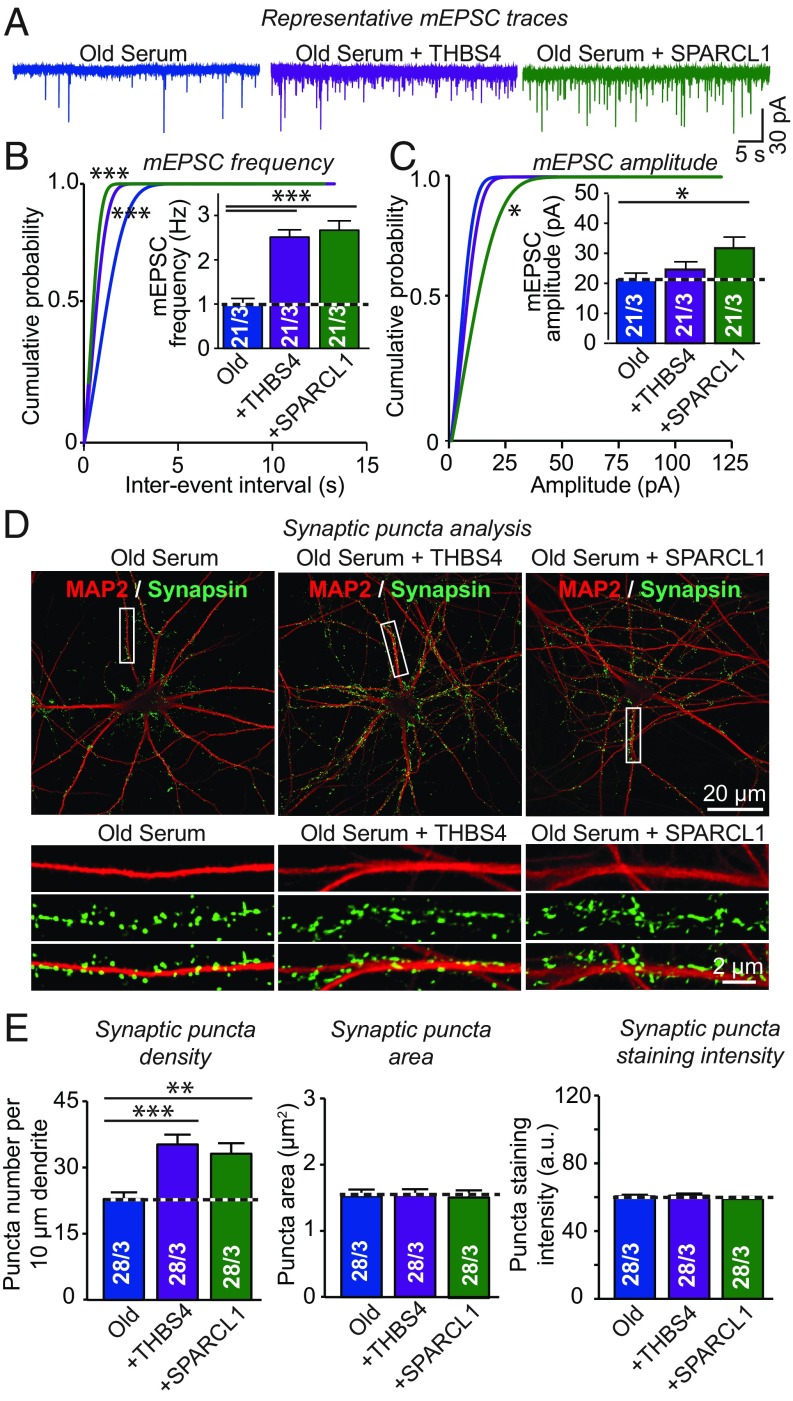Fig. 6.
Addition of THBS4 or SPARCL1 enhances synaptic responses and synapse numbers even when neurons are cultured in old serum, demonstrating that both proteins override the effect of putative old serum factors. Old serum was added to human neurons cocultured with glia at DIV10; THBS4 or SPARCL1 were subsequently added at DIV35; and neurons were analyzed at DIV42. (A–C) Addition of THBS4 or SPARCL1 dramatically increases synaptic activity in neurons cultured in old serum, as evidenced by analyses of mEPSCs (A, representative traces; B, cumulative distribution of the interevent interval of mEPSCs with the mean mEPSC frequency shown in the bar diagram Inset; C, cumulative distribution of the mEPSC amplitude with the mean amplitude shown in the bar diagram Inset). (D and E) Addition of THBS4 or SPARCL1 dramatically increases synapse numbers in human neurons cultured in the presence of old serum (D, representative images of neurons stained for MAP2 and synapsin; E, summary graphs of the synapse density, size, and staining intensity). All bar graphs are means ± SEM; numbers of cells per independent cultures analyzed are shown in bars. Statistical significance (*P < 0.05; **P < 0.01; ***P < 0.001) was evaluated by one-way ANOVA followed by Tukey’s post hoc tests (bar graphs) or Kolmogorov–Smirnov test (cumulative probability plots). Nonsignificant comparisons are not indicated.

